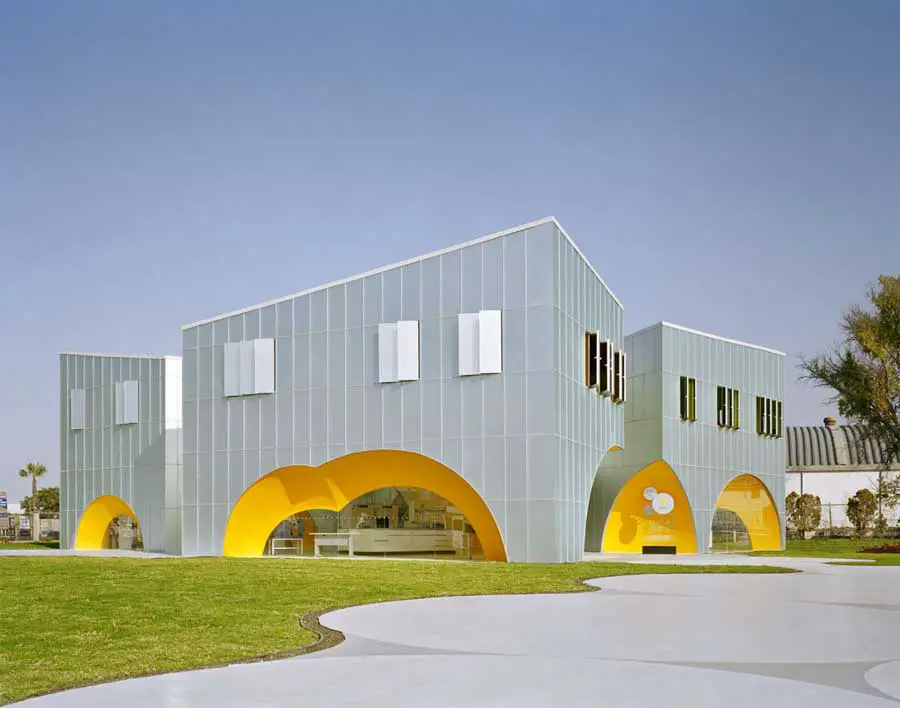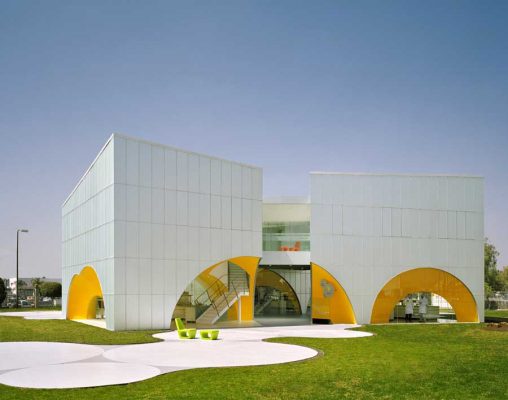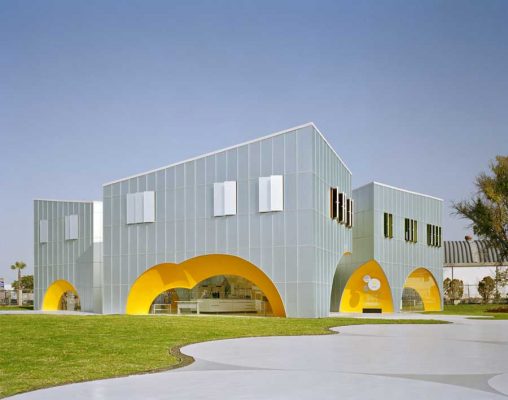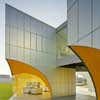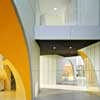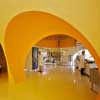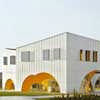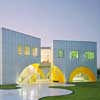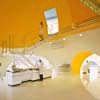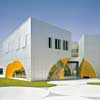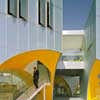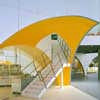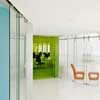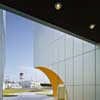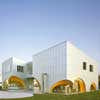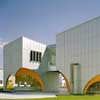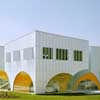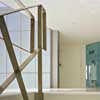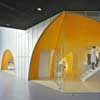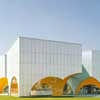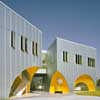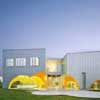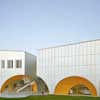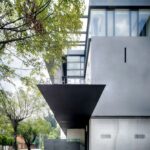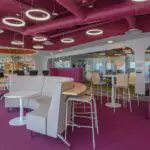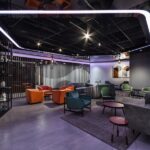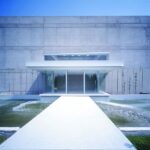Nestlé Application Group, Mexico Building, Queretaro Project, Mexican Design Photos
Nestlé Application Group Mexico : Queretaro Building
Nestlé Application Group Queretaro design by Michel Rojkind Arquitectos
Post updated 12 June 2024
Location: Queretaro, Mexico
Date built: 2009
Design: Michel Rojkind Arquitectos
Photos © Paúl Rivera/archphoto.com
13 May 2009
Nestlé Application Group
In his “Atlantida de hormigón”, Reyner Banham posits “a casual connection, conscious and cultural, between modern architecture and industrial utilitarian structures of an industrial epoch. From Loos and Berhens to Gropius and Le Corbusier among others, in the beginning of the 20th century, a constant back and forth was established between architecture and industrial construction – up until this time marginalized in Architecture – that would continue to be a characteristic of contemporary architecture.
To reinvent the industrial world was a task with which architecture had paid back the favor of having been shown the path as to how to disengage of the heavy formal and stylistically weight of almost two centuries of vacuous rhetoric and ecclesiastic academicism. To reinvent, is understood, as the invention of an image which moves between the operative logic and the logotype.
Between this, lays the work that Rojkind arquitectos has done for a pair of factory additions for the Nestlé Company. The first commission consists of a vestibule for one of its chocolate factories in the outskirts of Toluca, near Mexico City; it is a structure of sloped plains attached to the existing factory that will serve as the central core for a future museum.
The second commission located in Queretaro’s industrial zone, is a laboratory for development of new products, packaging center and a satellite office for its product technology center located in Maryville which focuses on the development of new drinking products.
This latter commission presented an additional challenge besides its relationship with the existing facility. The UNESCO’s designation of Queretaro’s historic city center as a world heritage site in 1996, had unforeseen consequences that even expanded to the city’s industrial periphery.
As a result of this designation, the new building was to have an arched porch, as rooted in tradition. Rojkind responded to this challenge with a reinterpretation not only of the arch but also of the porch. If the arch is nothing else than a fragment of a cupola, in the same vein, the cupola is an amplified arch when it rotates around its own axis, the cupola meets the reference criteria of the arch without turning it into a cliché.
In this case, a series of spheres intersect and multiply like foam forming the origin of a continuous open space; a portico. This space expands while another one, made of orthogonal boxes clad in satin mirrored glass, restrains the proliferation of the spheres and houses the specific program requirements for the lab.
While the exterior is opaque, metallic and impenetrable in appearance, the interior of these boxes painted in different colors, have an almost theatrical quality to them: it appears as if the researchers wearing their white robes were floating in a continuous flow of blues, yellows or greens which are interrupted by the continuous space of different colors Sometimes, when one of the of the metal panels that covers the boxes reveals itself and opens like a window, they can be seen from the outside.
The construction of these buildings (if built in a different latitude, a more sophisticated technology most likely would have had been employed to automatize the production of the unique geometries of these spheres) implied the translation of spatial forms was to be done in a different constructive manner, in a simple almost colloquial way, which allowed the local workers to fabricate the foam like spherical space from the physical intersection of the spherical cupolas made of rebar rings and arches.
The final result is a series of contrasts that has been unified with apparent simplicity: the exterior metallic slightly reflective satin color lightly contrasts with and against the bright and satin colors of the interiors, the sloped abstracted planes of the boxes contrast against the exuberance of the interweaving spheres. The strength of this project might be attributed to this game of contrasting opposites, which in a dynamic and changing way depending from the physical view of the observer, can be a dominant characteristic in a moment or a discrete characteristic in another. A rethought and recharged industrial construction thus regains an understanding of what at one time it offered to Architecture: clarity and force.
Alejandro Hernández
Nestlé Application Group Mexico – Building Information
Construction: 700 Sqm
Program: Laboratories, Offices, Auditorium, Tasting Area
Client: Nestlé
Design Year: 2007
Date Of Completion: 2009
Architectural Project: Rojkind Arquitectos
Principal In Charge: Michel Rojkind
Project Leaders: Agustín Pereyra, Paulina Goycoolea
Project Team: Juan Carlos Vidals (3d Massing), Moritz Melchert, Tere Levy, Isaac Smeke Jaber, Tomas Kristof, Francisco Gordillo, Andrés Altesor, Juan Pablo Espinosa
Landscape: Rojkind Arquitectos
Facade Engineering: Vycisa (Juan Pablo Casillas, Cybelle Hernández)
Structural Engineer: Juan Felipe Heredia
M.e.p.: Quantum Design
Nestlé Supervision: Flavio Guerrero, Cristian Moreno
Construction: Slci Engineer José Solis
Furniture: Esrawe Diseño / Arne Quinze / Pm Steele
Carpets: Interface
Photos © Paúl Rivera/archphoto.com
Nestlé Application Group Mexico images / information from Michel Rojkind Arquitectos
Location: Queretaro, Mexico, North America
Mexican Architecture
Contemporary Mexican Architecture
Mexican Architecture Designs – chronological list
Mexico City Architecture Tours – city walks by e-architect
Queretaro Buildings
Puerta la Victoria Queretaro
Design: ARCHETONIC Architects
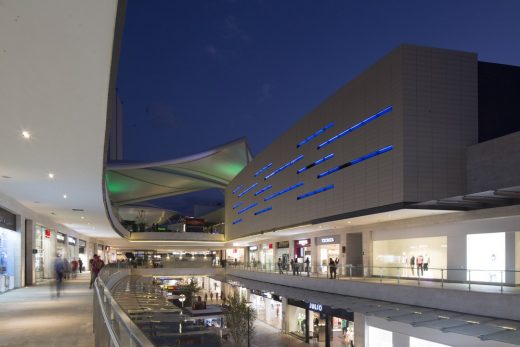
photo courtesy of architects
Puerta la Victoria in Queretaro
Amirá Housing Development
Design: ARCHETONIC Architects
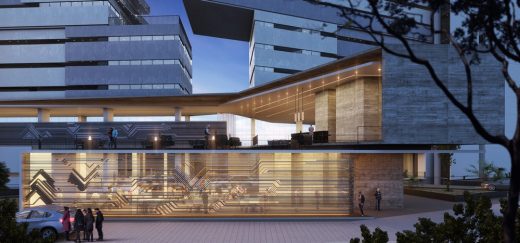
render : CG Veron
Amirá Housing Development Queretaro
Mourning House, Mexico City
Pascal Arquitectos
Mourning House Mexico City
Arango Residence, Acapulco
John Lautner
Acapulco house
Museo del Acero – Museum of Steel, Monterrey
Grimshaw Architects
Museo del Acero Monterrey
Comments / photos for the Nestlé Application Group Mexico Architecture page welcome

